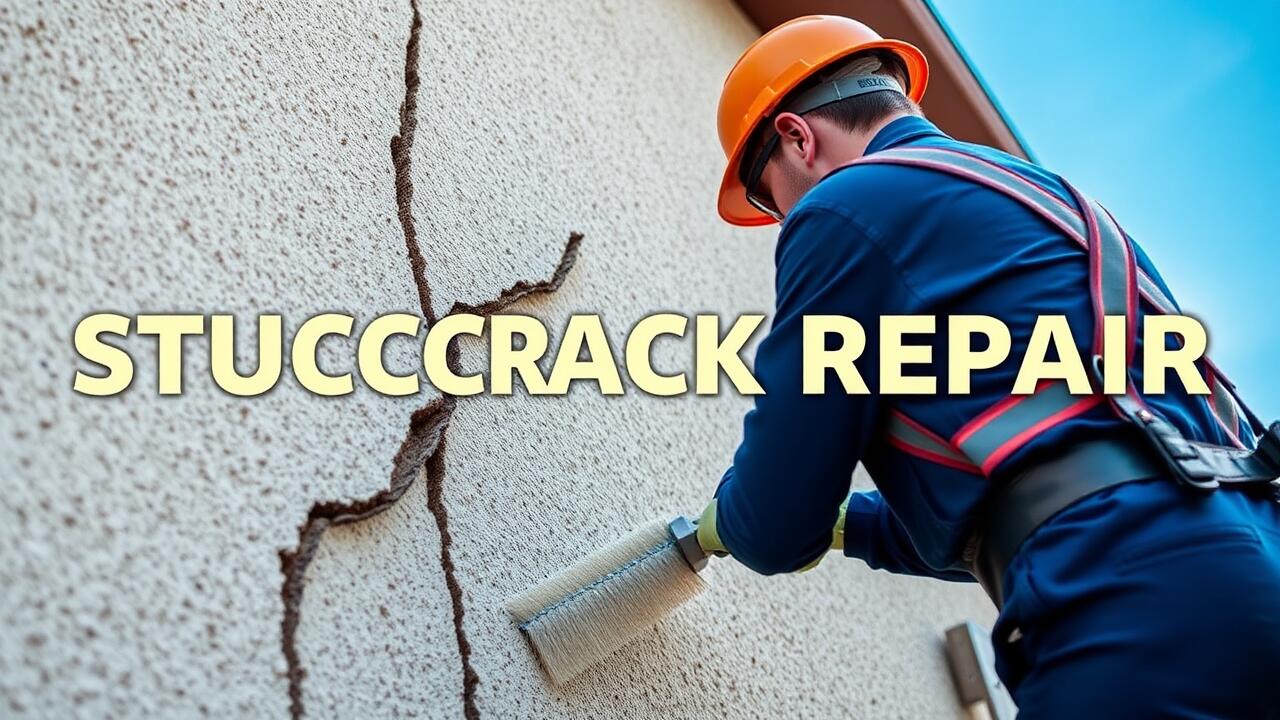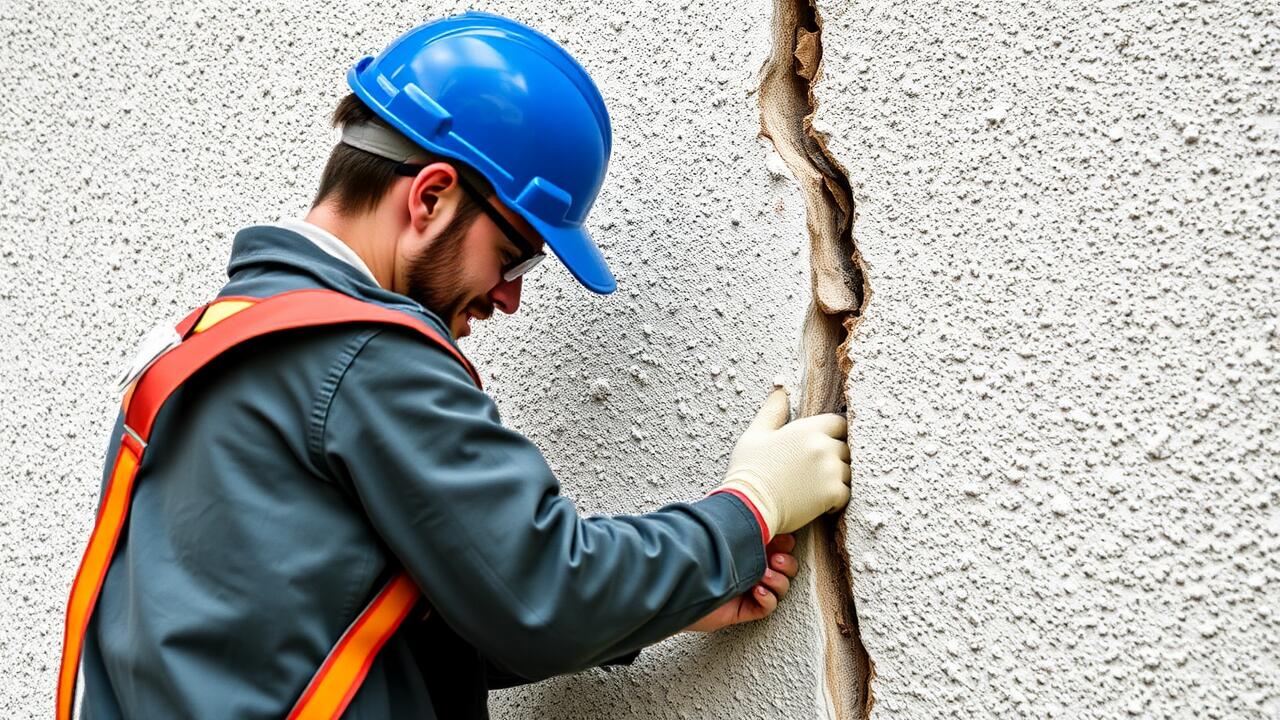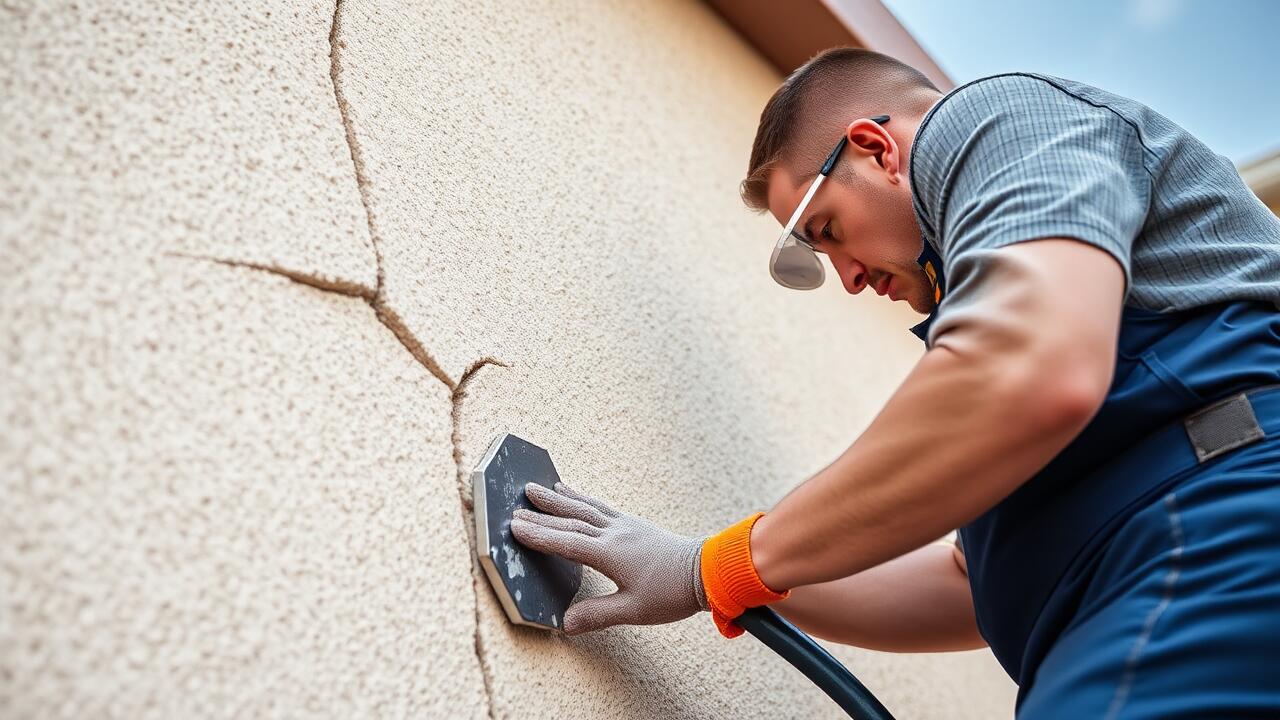
Preventive Measures for Stucco Cracking
Temperature fluctuations can significantly impact the integrity of stucco surfaces, leading to cracks that can compromise both aesthetics and structural stability. To prevent such issues, homeowners should prioritize proper stucco application techniques. Ensuring a suitable mix of ingredients and maintaining the right thickness during installation helps the material withstand environmental stressors. Regular inspections after harsh weather can identify early signs of damage, enabling timely interventions that prevent further deterioration.
Routine maintenance plays a crucial role in extending the lifespan of stucco. Applying a high-quality sealant can help protect against moisture penetration, which is another contributor to cracking. In cases where cracking does occur, swift action is necessary. Searching for "Stucco Crack Repair near me" can connect homeowners with professionals who provide effective repair solutions tailored to specific needs. By staying proactive with both installation and maintenance, the risk of significant cracking can be substantially reduced.
Best Practices for Installation and Maintenance
Proper installation of stucco plays a crucial role in minimizing potential cracking. It is essential to start with a well-prepared substrate, ensuring that the surface is clean and free from debris. Choosing the right mix of materials is equally important; using high-quality stucco mixes can enhance durability and flexibility. Additionally, applying stucco in appropriate weather conditions can significantly reduce the risks associated with temperature fluctuations.
Maintenance is equally important in preserving stucco integrity over time. Regular inspections can identify issues like moisture infiltration or surface wear before they escalate. Sealing cracks promptly can prevent water damage, which is often a precursor to more significant problems. Homeowners seeking immediate assistance might search for “Stucco Crack Repair near me” to find local professionals who can effectively address any issues and prolong the life of their stucco surfaces.
Repairing Cracks in Stucco
Repairing cracks in stucco is essential to maintain both the aesthetic and structural integrity of a building. The first step in the repair process involves cleaning the area around the crack to remove any debris, dust, or loose stucco. This preparation ensures that the repair materials adhere properly and last longer. For smaller cracks, a straightforward approach may include filling them with a specialized stucco patching compound. For larger cracks, it might be necessary to apply a reinforcing mesh before adding the stucco mix.
Finding a reliable service for repair is crucial for achieving optimal results. Homeowners often search for “Stucco Crack Repair near me” to locate experienced professionals who can handle the repairs effectively. Skilled contractors will assess the damage and offer tailored solutions based on the extent of the cracks and the overall condition of the stucco. Timely repairs not only prevent further deterioration but can also enhance the property’s curb appeal.
Techniques for Effective Repair
When addressing stucco cracks, choosing the right repair technique is critical to ensuring a long-lasting solution. The first step often involves cleaning the crack and removing any loose material. This prepares the surface for a better bond with the repair compound. Once cleaned, applying a suitable filler that matches the existing stucco texture is essential. Many homeowners search for “Stucco Crack Repair near me” to find professional services that ensure the repairs are seamless and aesthetically pleasing.
After applying the filler, it’s crucial to allow ample drying time, often specified by the manufacturer's instructions. If the crack is wide or deep, using a reinforcing mesh may be necessary before applying the finish coat. This will provide added strength and help prevent future cracking. Regular maintenance and inspections can improve the longevity of the repairs, ensuring that any new issues are addressed promptly. For effective and durable results, professional help is always advisable.
The Importance of Proper Insulation
Proper insulation plays a critical role in maintaining the integrity of stucco surfaces. It acts as a barrier, reducing the transfer of heat between the interior and exterior environments. This stabilization of temperature decreases the strain on stucco, particularly during periods of rapid temperature fluctuations. When walls are well-insulated, they experience fewer dramatic contractions and expansions that can lead to cracks.
Inadequate insulation can significantly increase the likelihood of stucco issues, impacting both aesthetics and longevity. Homeowners experiencing cracks should consider their insulation methods. Addressing these concerns early on can reduce the need for extensive repair work later. For those in need of assistance, searching for "Stucco Crack Repair near me" can connect homeowners with local experts who understand these challenges.
How Insulation Reduces Temperature Impact
Proper insulation plays a crucial role in minimizing the impact of temperature fluctuations on stucco surfaces. When insulation is effectively installed, it creates a thermal barrier that helps maintain a consistent indoor temperature. This stability reduces the stress on the stucco exterior as it expands and contracts less dramatically in response to temperature changes. Additionally, better insulation can also lead to improved energy efficiency, which indirectly contributes to the longevity of the stucco finish by maintaining a steady climate within the building.
In regions prone to extreme temperature variations, ensuring adequate insulation becomes even more essential. Homes with insufficient insulation may experience greater temperature swings, leading to increased risks for cracking. For homeowners facing such issues, seeking professional assistance can make a difference. A quick search for “Stucco Crack Repair near me” can connect individuals with local experts who can address both insulation concerns and repair existing flaws, enhancing the resilience of the stucco against future temperature impacts.
FAQS
What causes temperature fluctuations that affect stucco?
Temperature fluctuations can be caused by seasonal changes, daily weather patterns, and environmental factors such as sunlight exposure and wind. These variations can lead to expansion and contraction of the stucco material, increasing the risk of cracking.
How can I prevent stucco cracking due to temperature changes?
Preventive measures include ensuring proper installation techniques, using quality materials, applying a weather-resistant barrier, and maintaining adequate insulation to minimize temperature impact.
What should I do if I notice cracks in my stucco?
It’s important to assess the size and severity of the cracks. Small, hairline cracks can often be repaired with caulk or patching compound, while larger cracks may require professional assessment and repair techniques to prevent further damage.
How does insulation help reduce temperature impact on stucco?
Proper insulation creates a thermal barrier that helps maintain a more consistent temperature inside the walls, reducing the stress that temperature fluctuations place on the stucco surface and minimizing the risk of cracking.
Are there specific techniques for repairing cracks in stucco?
Yes, effective repair techniques include cleaning the crack, applying a flexible sealant or patching compound, and ensuring proper blending with the surrounding surface for a seamless appearance. For larger or more severe cracks, consulting a professional may be advisable.



